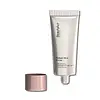What's inside
What's inside
 Key Ingredients
Key Ingredients

 Benefits
Benefits

 Concerns
Concerns

 Ingredients Side-by-side
Ingredients Side-by-side

Niacinamide
SmoothingWater
Skin ConditioningPropanediol
SolventPropylene Glycol
HumectantMica
Cosmetic ColorantEthylhexyl Palmitate
EmollientCI 77891
Cosmetic ColorantAmmonium Acryloyldimethyltaurate/Vp Copolymer
Phenoxyethanol
PreservativeCI 77491
Cosmetic ColorantEthylhexylglycerin
Skin ConditioningTocopheryl Acetate
AntioxidantEvodia Rutaecarpa Fruit Extract
Skin ConditioningSodium Glycerophosphate
Potassium Magnesium Aspartate
BufferingCalcium Glucoheptonate
Skin ConditioningMagnesium Gluconate
Skin ConditioningTrihydroxystearin
Skin ConditioningSodium Hyaluronate
HumectantGlucomannan
Skin ConditioningNiacinamide, Water, Propanediol, Propylene Glycol, Mica, Ethylhexyl Palmitate, CI 77891, Ammonium Acryloyldimethyltaurate/Vp Copolymer, Phenoxyethanol, CI 77491, Ethylhexylglycerin, Tocopheryl Acetate, Evodia Rutaecarpa Fruit Extract, Sodium Glycerophosphate, Potassium Magnesium Aspartate, Calcium Glucoheptonate, Magnesium Gluconate, Trihydroxystearin, Sodium Hyaluronate, Glucomannan
Water
Skin ConditioningAloe Barbadensis Leaf Juice
Skin ConditioningPentylene Glycol
Skin ConditioningCoco-Caprylate/Caprate
EmollientC15-19 Alkane
SolventMica
Cosmetic ColorantGlyceryl Stearate Citrate
EmollientGlycerin
HumectantSilica
AbrasiveMacadamia Integrifolia/Tetraphylla Seed Oil
EmollientGlyceryl Stearate
EmollientSimmondsia Chinensis Seed Oil
EmollientGluconolactone
Skin ConditioningSodium Hyaluronate
HumectantLactobacillus Ferment
Skin ConditioningLactobacillus
Skin ConditioningCocos Nucifera Fruit Extract
EmollientGlyceryl Caprylate
EmollientTocopherol
AntioxidantGalactoarabinan
Hydrogenated Olive Oil Stearyl Esters
Emulsion StabilisingXanthan Gum
EmulsifyingSodium Stearoyl Glutamate
CleansingSodium Chloride
MaskingSodium Gluconate
Skin ConditioningCI 77002
Cosmetic ColorantCI 77491
Cosmetic ColorantCI 77492
Cosmetic ColorantCI 77499
Cosmetic ColorantCI 77891
Cosmetic ColorantWater, Aloe Barbadensis Leaf Juice, Pentylene Glycol, Coco-Caprylate/Caprate, C15-19 Alkane, Mica, Glyceryl Stearate Citrate, Glycerin, Silica, Macadamia Integrifolia/Tetraphylla Seed Oil, Glyceryl Stearate, Simmondsia Chinensis Seed Oil, Gluconolactone, Sodium Hyaluronate, Lactobacillus Ferment, Lactobacillus, Cocos Nucifera Fruit Extract, Glyceryl Caprylate, Tocopherol, Galactoarabinan, Hydrogenated Olive Oil Stearyl Esters, Xanthan Gum, Sodium Stearoyl Glutamate, Sodium Chloride, Sodium Gluconate, CI 77002, CI 77491, CI 77492, CI 77499, CI 77891
Ingredients Explained
These ingredients are found in both products.
Ingredients higher up in an ingredient list are typically present in a larger amount.
Ci 77491 is also hydrated iron III oxide. It's sole purpose is to give a red/pink hue to products.
Iron III oxides are classified as inorganic chemicals for coloring.
Synthetically created Ci 77491 is considered safer than those naturally found. This is because the synthetically created version may contain less impurities. Iron oxides are generally non-toxic and non-allergenic.
Learn more about CI 77491Ci 77891 is a white pigment from Titanium dioxide. It is naturally found in minerals such as rutile and ilmenite.
It's main function is to add a white color to cosmetics. It can also be mixed with other colors to create different shades.
Ci 77891 is commonly found in sunscreens due to its ability to block UV rays.
Learn more about CI 77891Mica is a naturally occurring mineral used to add shimmer and color in cosmetics. It can also help improve the texture of a product or give it an opaque, white/silver color.
Serecite is the name for very fine but ragged grains of mica.
This ingredient is often coated with metal oxides like titanium dioxide. Trace amounts of heavy metals may be found in mica, but these metals are not harmful in our personal products.
Mica has been used since prehistoric times throughout the world. Ancient Egyptian, Indian, Greek, Roman, Aztec, and Chinese civilizations have used mica.
Learn more about MicaSodium Hyaluronate is hyaluronic acid's salt form. It is commonly derived from the sodium salt of hyaluronic acid.
Like hyaluronic acid, it is great at holding water and acts as a humectant. This makes it a great skin hydrating ingredient.
Sodium Hyaluronate is naturally occurring in our bodies and is mostly found in eye fluid and joints.
These are some other common types of Hyaluronic Acid:
Learn more about Sodium HyaluronateWater. It's the most common cosmetic ingredient of all. You'll usually see it at the top of ingredient lists, meaning that it makes up the largest part of the product.
So why is it so popular? Water most often acts as a solvent - this means that it helps dissolve other ingredients into the formulation.
You'll also recognize water as that liquid we all need to stay alive. If you see this, drink a glass of water. Stay hydrated!
Learn more about Water